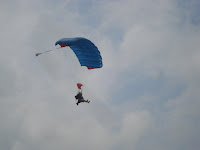________________________________________________
Discover-Nepal recommends you to buy Lonely Planet's Guide :
________________________________________________
The best way to experience Nepal's unbeatable combination of natural beauty and cultural riches is to walk through them. The immense contrast in altitudes and climates found here support an equally spectacular mix of lifestyles, vegetation type and wildlife. You will see Chhetri farmers working in their fields and Tamang herders grazing their animals on the steep slopes. You will meet Gurkha soldiers home on leave and come across Sherpa yak drivers transporting goods over the high mountain passes. And always in the background, the icy pinnacles of the Himalaya loom over the scenery.
Preparations
You don't need to be a mountaineer with rippling muscles to enjoy trekking. If you are reasonably fit, have a spirit of adventure and are not afraid of waling, you qualify. There are excellent trekking agencies who will take care of all the details. All you have to do on the trail is concentrate on putting one foot before the other. On many popular trekking trails, you can also trek in what is known as 'tea house style' - eating and staying in the many lodges and tea houses on the way instead of camping in tents.
Equipment
Your trekking agency will provide equipment like sleeping bags, foam mattresses and tents. All you need to bring are your personal wear like walking boots and sandshoes, a water and wind proof jacket, woolen shirts, T-shirts, a thick pullover, shorts/skirts and trousers/track suit. Thermal underwear is necessary for high altitudes and cottons are best for lower and warmer altitudes. Also don't forget a water bottle, Swiss army knife, sewing kit, torch light with spare batteries, extra boot laces, sun glasses, sun cream and personal medical supplies.
Seasons
Trekking is possible at any time of the year depending on where you are going. The most popular seasons are spring (February-May) and autumn (September-November). Winter is very cold above 4,000m and high mountain passes may be snowbound but it is good for trekking at lower altitudes. During the monsoon season (June-August), you can trek in the rain-shadow areas north of the Himalaya like Mustang, Upper Manang and Dolpo. these places are out of reach of the rain clouds because of the high mountains and are unaffected by the monsoon.
Precautions
You trek to enjoy the scenery on the trail, not to get to a destination in a hurry. The main precaution to be taken while trekking is not to go up too high to fast. The body should be given plenty of time to acclimatize. Acute Mountain Sickness (AMS) refers to the effects of the thin air at high altitudes which can be very dangerous and may even result in death. If you get initial symptoms like nausea, dizziness, swelling in the face and breathlessness, descend to a lower elevation immediately and seek medical help. Comprehensive travel insurance is advised to over emergencies like helicopter rescue and medical treatment in case of accidents on the trail.
Where to Trek?
The entire length and breadth of the kingdom is a paradise for trekkers. There are easy walks lasting a few days and there are strenuous expeditions that take several weeks. All of them have great scenery. Here are few:
Annapurana: The most popular trekking route in Nepal takes you through some of the most stunning scenery on earth. You will be walking through rhododendron forests over the foothills of the Annapurna and Dhaulagiri ranges and through the Kali Gandaki Gorge, the deepest in the world. Treks to the Annapura region start from the lake-side resort town of Pokhra. (Maximum Elevation covered on the trek is 3939 m.)
Everest: The highest mountain in the world continues to lure adventures are ever. A hair-raising flight lands you at the airstrip of Lukal (2850 m) from where you begin walking to the famous Sherpa village of Namche Bazaar and on to Tengboche monastery with the mesmerizing peak of Ama Dablam hovering in the sky. Then it's over the glacier to the foot of Everest for the view of a lifetime. (Maximum elevation 5546 m.)
Langtang: The third most popular trekking region in the Kingdom lies directly to the north of Kathmandu. The gosaikund lakes situated here are a much-revered Hindu pilgrimage site. Langtang offers baffling extremes in topography and climate conditions. In just one day you can traverse five different vegetation zones trekking from the subtripics to timberline. (Maximum elevation 4480 m.)
Remote areas: For those who want to get off the beaten track, there is the trail to Mustang (Maximum elevation 5400 m.) north of the Annapurna range which offers mind-boggling landscapes and mystical cultures. Manaslu in west-central Nepal (Maximum elevation 523 m) offers a diverse range of pristine eco-systems. Makalu in the eastern part of the country (Maximum elevation 5350 m.) takes you through isolated valleys and high mountain passes to the base of the fifth highest peak on the earth. Dolpo in northwest Nepal (maximum elevation 4,500 m) captivates visitors with its Phoksundo Lake and unparalleled scenery.
Trekking Permits
All visitors require a trekking permit to visit Nepal's interior regions not connected by major roads. Trekking permits are available from the Department of Immigration in Kathmandu or Pokhra. Two photographs are required with the application. If your are trekking in more than one region, separate trekking permits are necessary for each region.
National Park Fees
You need to pay a park fee to enter a National Park or Wildlife Reserve. The fee is payable at the park entrance. Trekkers going to the Annapurna Region have to pay a fee of Rs. 1000 (Rs. 100 for SAARC nationals). The toll is utilized for environment conservation and maintenance of the area.




